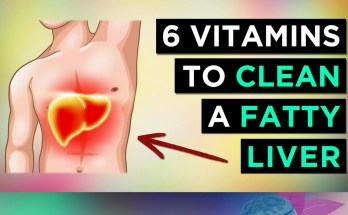What Are Age Spots?
Age spots, also known as liver spots or solar lentigines, are flat, brown, black, or gray patches that appear on the skin. They are most commonly found on areas frequently exposed to the sun, such as the face, hands, shoulders, and arms. These spots are a common sign of aging but can also occur in younger individuals who have had significant sun exposure.
While age spots are generally harmless and non-cancerous, they can be a cosmetic concern for many people. Understanding their causes and exploring effective treatments can help you manage or even eliminate these unwanted marks.
What Causes Age Spots?
Age spots develop due to an overproduction of melanin—the pigment responsible for skin color. Several factors contribute to this excess melanin production:
- Sun Exposure: Prolonged exposure to ultraviolet (UV) rays from the sun is the primary cause of age spots. UV light accelerates melanin production in certain areas of the skin, leading to discoloration over time.
- Tanning Beds: Artificial UV light from tanning beds can also trigger melanin overproduction and result in age spots.
- Aging Process: As we age, our skin’s ability to regenerate diminishes. This makes it more susceptible to damage from environmental factors like sunlight.
- Genetics: Some individuals may be genetically predisposed to developing age spots.
- Hormonal Changes: Hormonal fluctuations during pregnancy or menopause can sometimes lead to hyperpigmentation and age spot formation.
- Skin Injuries or Inflammation: Previous injuries or conditions like acne may leave behind darkened patches that resemble age spots.
How Can You Prevent Age Spots?
Prevention is always better than cure when it comes to maintaining healthy skin. Here are some tips to reduce your risk of developing age spots:
- Use Sunscreen Daily: Apply a broad-spectrum sunscreen with at least SPF 30 every day, even during cloudy weather.
- Wear Protective Clothing: Long-sleeved shirts, wide-brimmed hats, and sunglasses can shield your skin from harmful UV rays.
- Avoid Peak Sun Hours: Limit your time outdoors between 10 a.m. and 4 p.m., when the sun’s rays are strongest.
- Avoid Tanning Beds: Opt for safer alternatives like self-tanning lotions if you want a bronzed look.
- Maintain a Healthy Skincare Routine: Regularly exfoliate and moisturize your skin to keep it healthy and resilient against damage.
Effective Treatments for Clearing Age Spots
If you already have age spots and wish to reduce their appearance or remove them entirely, several treatment options are available:
1. Topical Creams
Over-the-counter (OTC) creams containing ingredients like hydroquinone, retinoids (e.g., tretinoin), glycolic acid, or kojic acid can lighten age spots over time by reducing melanin production.
2. Prescription Medications
For more stubborn cases, dermatologists may prescribe stronger topical treatments that target pigmentation more effectively.
3. Chemical Peels
Chemical peels involve applying a solution that exfoliates the top layer of skin cells. This process encourages new cell growth while fading dark patches like age spots.
4. Laser Therapy
Laser treatments use concentrated beams of light to break down excess melanin in targeted areas without damaging surrounding tissue. This method is highly effective but may require multiple sessions depending on the severity of the pigmentation.
5. Cryotherapy
Cryotherapy involves freezing individual age spots with liquid nitrogen to destroy pigmented cells so they flake off naturally as the area heals.
6. Microdermabrasion
This minimally invasive procedure uses tiny crystals or abrasive surfaces to gently exfoliate the outermost layer of skin where discoloration resides.
7. Natural Remedies
Some natural remedies may help fade mild cases of hyperpigmentation:
- Lemon juice: Contains citric acid that acts as a natural bleaching agent.
- Aloe vera: Known for its soothing properties; it may help lighten darkened areas over time.
- Green tea extract: Rich in antioxidants that combat free radicals contributing to pigmentation issues.
However, natural remedies often take longer than medical treatments and may not work for everyone.
When Should You See a Dermatologist?
While most age spots are harmless, it’s essential to monitor any changes in their size, shape, color, or texture since these could indicate melanoma—a type of skin cancer. Consult a dermatologist if you notice:
- Rapid growth
- Irregular borders
- Multiple colors within one spot
- Itching or bleeding
A professional evaluation ensures proper diagnosis and treatment if necessary.
Conclusion
Age spots are a common cosmetic concern caused primarily by sun exposure and aging processes. While prevention through sunscreen use and protective measures is key, various treatment options—from topical creams to advanced laser therapies—can effectively reduce their appearance if they’ve already developed.
By understanding what causes these marks and taking proactive steps toward prevention or removal under professional guidance when needed, you can maintain healthier-looking skin at any stage of life!
Top 3 Authoritative Sources Used in Answering this Question:
- American Academy of Dermatology (AAD): The AAD provides comprehensive information about various dermatological conditions including hyperpigmentation disorders like age spots along with evidence-based prevention tips and treatment options.
- Mayo Clinic: A trusted source for medical information offering detailed insights into causes, symptoms diagnosis methods & treatments related specifically towards managing benign pigmented lesions such as lentigines
3 .Cleveland Clinic Known globally respected healthcare institution specializing providing accurate patient-centered resources tackling diverse range skincare concerns
Here’s If You Love to Read More: Understanding Leg Cramps: Causes, Prevention, and Remedies
Here’s If You Love to Watch Movie: MyFlixerHD





